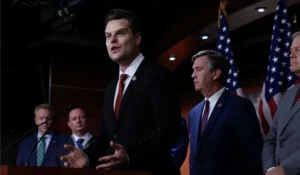Immigration Crisis

Recently there has been an explosion of immigrants from South America into the United States. With the immigration law called Title 42, which has allowed states to refuse immigrants at the border ending by the end of the year, there could be more than what the United States can handle. So what is the U.S. doing about the situation? The Biden administration has been trying to solve the growing crisis from sending financial help to border states immigration processing and capacity to rolling back both covid and Trump policies that refused immigrants and made it harder for them to be processed. President Biden visited the U.S-Mexico border on Sunday to ease the immigration backlog. He revealed a plan to accept up to 30,000 immigrants per month from Nicaragua, Cuba, Haiti, and Venezuela.
So why are more people than ever coming here? Some have come to flee violence, while others have come for political and economic stability—one country where the number of immigrants and asylum seekers has increased is Venezuela. The country started to go downhill when Hugo Chavez was elected president in 1999. He introduced laws that helped himself and hurt the average Venezuelan. By increasing oil prices and then saying he would give money to the poor and only giving 25% of it to them while keeping the rest for himself. Due to his overspending and price controls, Venezuela’s economy suffered poverty, and inflation ran rampant until Chavez died in 2013. When Nicolas Murdo was elected in 2013, he ruined the Venezuelan economy by not trying to fix the current issues. Instead of focusing on public opinion and enacting economic measures on himself and his loyalists, this was the straw that broke the camel’s back. Venezuela went into an economic recession in 2014 with an inflation rate of 800%.
This is the latest in a long line of issues that have constantly plagued the U.S. border and immigration policy. The Biden administration hopes to find a possible solution that the Democratic and Republican parties can agree on.








